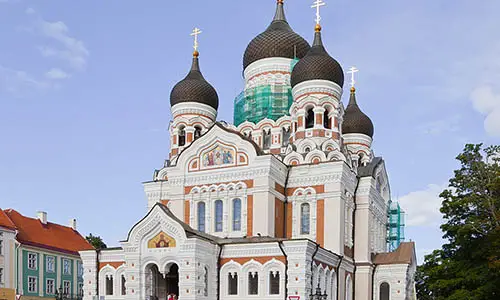1. The Republic of Estonia is a country in Northern Europe. It is on the Baltic Sea, facing the Gulf of Finland. There are more than 1500 islands in Estonia. The largest island is Saaremaa. The capital of Estonia is Tallinn, and the population is about 1.3 million. The national language is Estonian.
2. Estonia has a long history of foreign rule. From the end of the 12th century, it was under Germany, Denmark and Sweden. After the Russian- Livonian War in 1583, it was controlled by Denmark, Sweden and Poland. By 1645, Sweden took control of most of Estonia. This continued till 1721, when Sweden was defeated by Russia in the Great Northern War. Estonia surrendered to Russia, and remained under Russian rule till the 20th century.
3. Estonia experienced a great deal of turbulence in the 20th century. In February, 1917, Czar Nicholas II was deposed. The Russian Provincial Government declared Estonia and northern Livonia as one entity, and the people elected a provisional Provincial Assembly. After the Communist coup in Russia, a few months later, Estonia declared itself an independent republic, but the very next day, German forces arrived and occupied the land till the end of World War I. After this, Estonia and its allies were engaged in fighting the Red Army of Communist Russia, till the Tartu Peace Treaty, in 1920.
4. In 1939, Germany and Soviet Russia signed the Molotov-Ribbentrop Pact. Under this pact, the two countries secretly divided Central and Eastern Europe into spheres of influence. In 1940, when the Allied forces were engaged in their war with Germany, Russia occupied Estonia, and forcibly made it a part of the Soviet Union. Germany occupied Estonia during World War II, but in 1944, the Soviet Union regained control. As the Iron Curtain fell across Eastern Europe, Estonia became an obscure part of the USSR. There were sporadic protests against Soviet rule, which were dealt with harshly. Then, in 1985, Gorbachev announced reforms in the USSR. In 1987, there were protests in Tallinn. This was followed by the Singing Revolution in 1988, and the Baltic Way, in which about 2 million people formed a human chain, stretching over 600 kms. from Tallinn to Vilnius. In 1990, free elections were held, and on 20th August, 1991, independence was finally restored to Estonia.
5. After gaining independence, Estonia made rapid progress. In 2004, it was accepted as a member of the European Union, and also joined NATO. Since 2011, its currency, which had reverted to kroons, became the euro. Estonians highly value science and technology, and this is apparent by the following facts: 80% of the population uses the internet, the entire country is covered by mobile networks and all schools have internet access. The popular software program, Skype, was developed by Estonians. The government is trying to do as much official work as possible online, even to the extent of permitting online voting.
6. Estonia follows a parliamentary democracy system of government. The Prime Minister heads the executive, and there are elections every 4 years. Parliament elects the President, who is the head of state. The current President is Toomas Hendrik Ilves, and the Prime Minister is Taavi Roivas.
7. The climatic conditions in Estonia are fairly mild, considering how far north it is located. Winter is a time of darkness, however, with only a few hours of daylight from October to March. From March, the days grow longer till June, when there is hardly any darkness. This phenomenon occurs because Estonia is situated in a zone of astronomical twilight. This means that around the time of the summer solstice, this area does not become completely dark, even after sunset.
8. The Estonian language and culture is close to that of Finland. The epics of both countries share many common features, and both the national anthems have the same tune. Estonia has kept its tradition of folk songs and rhythmic verse (regivarss) alive, and research is encouraged. Song festivals are held every five years.
9. The people of Estonia are of mixed European descent, due to centuries of occupation and annexation. The physical characteristics of the people are diverse.
10. Estonia promotes tourism, and is an attractive summer destination. It has many beaches and thousands of lakes. 55% of the country is covered by forests. There are many music festivals and sight-seeing tours. The old town of Tallinn has been included in Unesco’s World Heritage List.











Leave a Reply